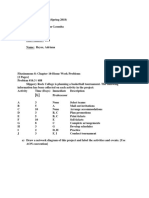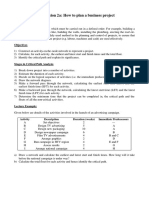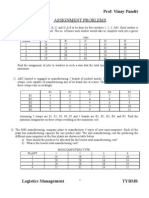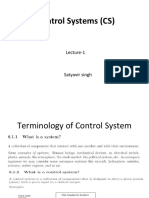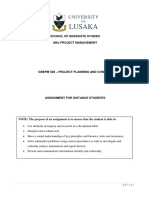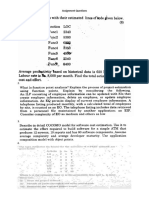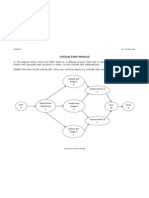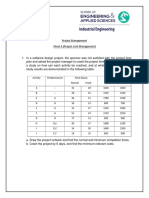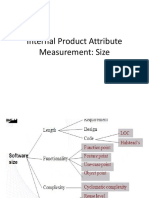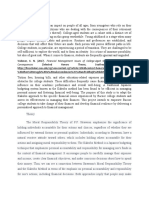100% found this document useful (1 vote)
309 views12 pagesPERT Method for Project Duration Estimation
1. The document describes Program Evaluation and Review Technique (PERT), which uses a three-point estimate of activity durations to model project schedules probabilistically.
2. PERT calculates the expected duration of each activity using the optimistic, most likely, and pessimistic estimates. It then calculates the critical path and variance to determine the probability of completing a project within a given time.
3. The example shows calculating the probability of completing a project within 24 time units as 76.12% and within 25.8 time units as 97.7% based on the activities' expected durations and variances.
Uploaded by
yousefCopyright
© © All Rights Reserved
We take content rights seriously. If you suspect this is your content, claim it here.
Available Formats
Download as PDF, TXT or read online on Scribd
100% found this document useful (1 vote)
309 views12 pagesPERT Method for Project Duration Estimation
1. The document describes Program Evaluation and Review Technique (PERT), which uses a three-point estimate of activity durations to model project schedules probabilistically.
2. PERT calculates the expected duration of each activity using the optimistic, most likely, and pessimistic estimates. It then calculates the critical path and variance to determine the probability of completing a project within a given time.
3. The example shows calculating the probability of completing a project within 24 time units as 76.12% and within 25.8 time units as 97.7% based on the activities' expected durations and variances.
Uploaded by
yousefCopyright
© © All Rights Reserved
We take content rights seriously. If you suspect this is your content, claim it here.
Available Formats
Download as PDF, TXT or read online on Scribd
/ 12

